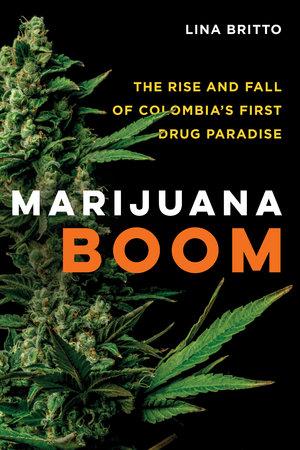Marijuana Boom: The Rise and Fall of Colombia's First Drug Paradise by Lina Britto (2023, University of California Press, 332 pp., $29.95 PB)

In Marijuana Boom, Britto adds elements of journalism, ethnography, and anthropology to her archival research to produce a rich, finely detailed portrait of northeastern Colombia, particularly the Greater Magdalena and the Guajira Peninsula, a long, skinny, mountainous arm poking out of Colombia into the Caribbean, and long a haven for maritime smuggling.
That is the heartland of the Colombian marijuana boom of the 1970s, but Britto situates the boom within a much larger and more complex context of national political projects to modernize and unify the country -- none of which succeeded in addressing issues of land tenure and social inequality, leading to repeated explosions of political violence and endemic social unrest. She also situates the marijuana boom squarely in the regional tradition of export agriculture booms, first bananas, then divi (a tree from which tannins for turning hides into leather can be extracted), followed by coffee.
And when the coffee boom petered out in the 1960s, all of the elements were in place for the next successful export commodity: marijuana. Marimba, as the locals called it (marijuana smugglers were marimberos), had been used and grown in Colombia for decades, having arrived with sailors making the circuits of the Caribbean. Thus, when American potheads freaked out by Richard Nixon's Operation Intercept shutting down the Mexican border (and access to Mexican weed) in 1969 went in search of alternate supplies and found good weed in northeastern Colombia, the social infrastructure was there to make marijuana the next export boom.
Sea-borne smugglers who had sharpened their skills on untaxed contraband coffee knew the routes, indigenous people of the Guajira and paisa emigrants from the Andean interior were ready to go to work growing the crops, and wealthy landowners, some politicians, and the politically connected were ready to invest the capital to reap the profits of prohibition. And an army of transporters, guides, middlemen, lawyers and bankers were there to help, too. Britto estimates that the business employed 150,000 people at its peak.
At its peak in the mid-1970s, the marijuana boom also had social legitimacy (and was a means of social mobility). The stuff had been made illegal in 1947, but being involved in the industry was still seen as being legitimate work -- not something criminal. While some marimberos got rich, many in the industry got merely the wages of agricultural workers, and in this sense, the marijuana boom merely replicated the social structures that had emerged in earlier agricultural booms.
Britto's analysis spans many levels -- from the granular detail of family vendettas in Barranquilla to the regional and national political projects and conflicts that shaped the nature of the boom to the international diplomatic level, where the desires of the United States loomed particularly large, and to the level of US domestic drug politics in the Jimmy Carter era. It was pressure from the US that led in 1978 to the Colombian government's first serious -- and ultimately successful -- effort to suppress the trade. Under sustained pressure from Colombian authorities aided by American dollars and expertise, within a couple of years the boom had gone bust.
And it largely vanished from the national imagination as Colombia was soon engulfed in the next drug boom, one that continues to this day: cocaine. But like the banana and coffee booms that created the infrastructure for the marijuana boom, the marijuana boom laid the groundwork for the much more violent and deadly cocaine trade.
Britto deserves kudos as well for her chapter on vallenato, the accordion-based cumbia offshoot that was the music of the marimberos. Rising stars in the pot trade cemented their social standing among their peers and society at large by sponsoring vallenato musicians and employing them to entertain at their parrandas, parties designed to show-off their wealth and generosity. The Colombia state has tried to recuperate and clean up vallenato as an important part of the country's musical patrimony, but it remains the music of the marimberos.
Marijuana Boom is a detailed, richly researched work that tells the story of a mostly forgotten era, but a boom whose suppression became the model for US and Colombian drug policy ever since.
This work by StoptheDrugWar.org is licensed under Creative Commons Attribution-ShareAlike 4.0 International
Add new comment